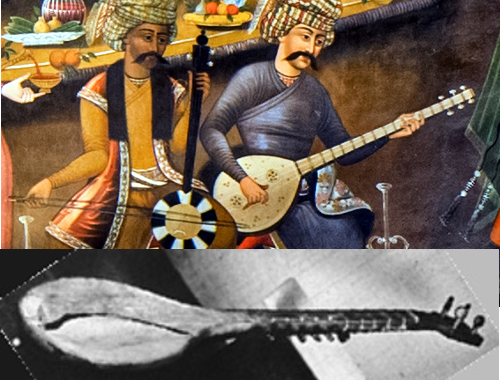The Shahnameh Guide To The Lutes Of Central Asia
Shashtar

Top: Historical painting of 6 stringed Shashtar shown in mural in Chehel Sotoun. Bottom: Shashtar from Afghanistan, unknown maker.
The Shashtar, Sheshtar or Shashtay (probably from Persian Şeş-tar, meaning six-string) is a stringed musical instrument of the lute family. It was mentioned historically by Evliya Çelebi and Abd al-Qadir Maraghi. It is or was played in Iran/Persia, Afghanistan, Azerbaijan and elsewhere. It may have been developed during the Safavid Dynasty from the tambur. Like the tambur, it has a floating bridge and a wooden soundboard (not skin like the rubab etc). The 6 gut strings were in 3 double courses, and thus it may be a forerunner of the Tar.
The panjtar, panchtar, pantay or pantar is a 5 stringed version with the lowest course single, instead of octave-strung, like the Kashgar Rubab.